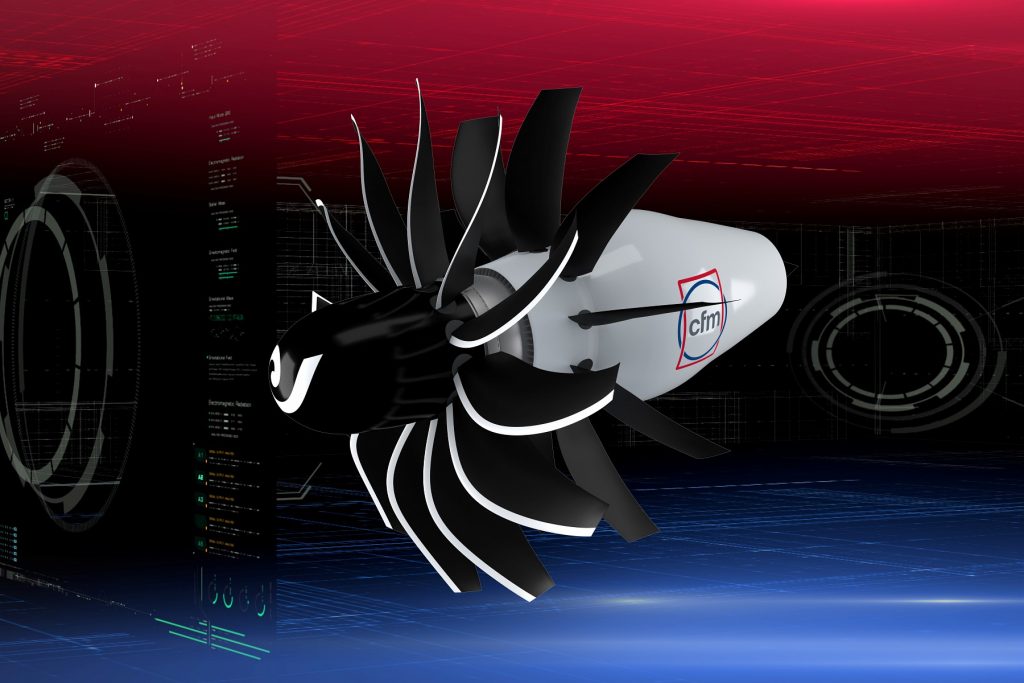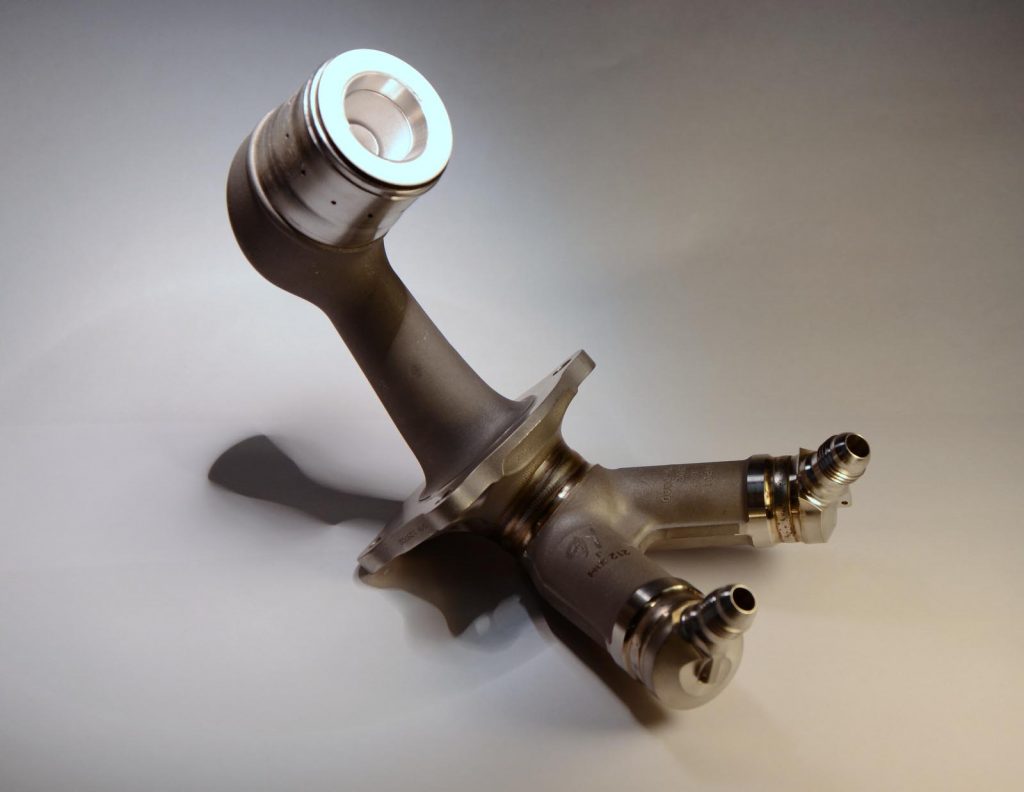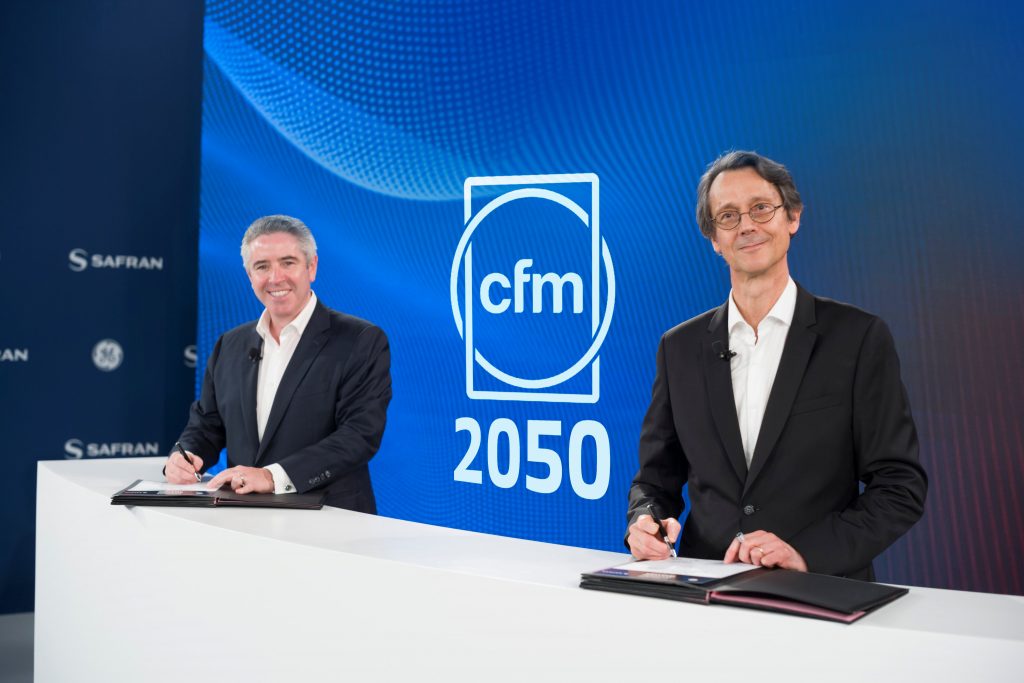Aerospace manufacturers GE Aviation and Safran have announced the commencement of a demonstrator project focused on test-building a new open-bladed jet engine, and it’s set to feature metal 3D printed parts.
The news comes as the companies extend their joint venture, CFM International, by ten years to 2050. Dubbed RISE (Revolutionary Innovation for Sustainable Engines), the environmentally-conscious engine is intended as a successor to the previously developed LEAP model, which is used on the Boeing 737 MAX and some Airbus A320neo aircraft.
Interestingly, the new design is an open-rotor one, meaning the fan blades will be visible. With plans to commercially launch RISE by the mid-2030s, CFM claims the engine will be able to reduce fuel consumption and emissions by up to 20% when compared to its predecessors.
A GE Additive spokesperson told 3D Printing Industry, “Yes, metal 3D printing will be part of the RISE program. We plan to use additive manufacturing in a variety of ways. For example, multiple turbomachinery components will use additive technology to support the complex geometries. We will share more details as the program develops.”

3D printing takes a LEAP
As a successor to the LEAP engine, it’s no surprise that the RISE model will contain 3D printed parts. In service since 2016, LEAP made waves in the aviation sector for setting a new industry standard for fuel efficiency, and it was partly enabled by GE’s extraordinary 3D printed fuel nozzle.
As well as being 25% lighter and five times more durable than a conventionally manufactured counterpart, the LEAP nozzle featured a complex geometry that pre-mixed the jet fuel before it was fed into the combustion chamber. Each LEAP engine housed 19 of these innovative fuel nozzles. GE has since 3D printed hundreds of thousands of the component, marking a huge milestone for high-volume 3D printing in the aerospace sector.
“Unlike traditional combustors that mix fuel and air inside the combustion chamber, the LEAP nozzle pre-mixes these elements to provide what our engineers call lean burn combustion,” wrote the CFM International LEAP engine microsite. “We just call it revolutionary.”

The RISE engine
Building on LEAP’s success, RISE will offer hybrid-electric propulsion. The system will also be capable of running on 100% sustainable hydrogen, which is reportedly favored by Airbus when it comes to future concepts.
With an open-rotor form, the engine will no longer hide the turbine blades, which reportedly has the effect of capturing more air and reducing the aircraft’s reliance on the fuel burning core. On the other hand, aerospace firms have dabbled with the concept of an open-rotor airliner engine since the 1980s, but noise has historically been a major issue.
However, according to Safran CEO Olivier Andriès, the RISE engine is expected to produce about as much noise as the current LEAP model. Having tested a very early prototype in 2017, the firm is confident that the new design will meet “the most stringent noise regulations” and safety standards.

GE’s use of additive manufacturing doesn’t stop there, as the company’s GE9X engine also features over 300 3D printed parts. This includes titanium aluminide (TiAl) turbine blades 3D printed using Arcam electron beam melting (EBM) technology. Back in 2020, the GE9X engines took to the air for the first time when Boeing completed the first flight of its 777X jet.
Elsewhere, in the sustainable energy sector, GE Research was recently awarded a project by the US Department of Energy (DoE) to explore the design and manufacture of 3D printed wind turbine blades. The project will initially produce a full-size 3D printed blade tip for structural testing, as well as three blade tips to be installed on a real wind turbine.
Subscribe to the 3D Printing Industry newsletter for the latest news in additive manufacturing. You can also stay connected by following us on Twitter, liking us on Facebook, and tuning into the 3D Printing Industry YouTube Channel.
Looking for a career in additive manufacturing? Visit 3D Printing Jobs for a selection of roles in the industry.
Featured image shows a concept render for the new RISE jet engine. Image via CFM International.


